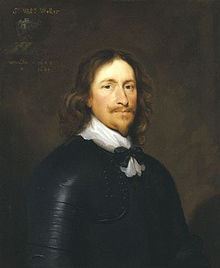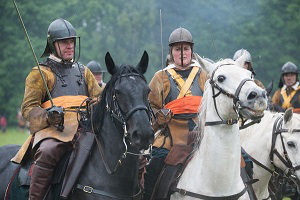Stella Riley's Blog, page 10
October 12, 2014
‘Sixteen hundred and sixty-six, London burned like rotten sticks’
For anyone interested in the Great Fire of London, ITV’s four-part dramatisation starts on October 16th at 9pm.
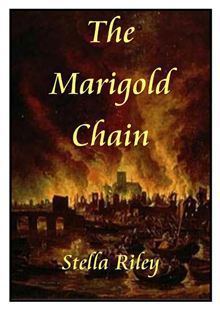
London, 1666
Those of you who have read The Marigold Chain will already know a great deal about what happened because the majority of my research came from the eye-witness account of Samuel Pepys … but seeing it on film should add a new dimension, even without Alex Deveril.
Since it is a drama rather than a documentary, some liberties will probably have been taken – but there are precious few programmes about Stuart England so, for those of us who are interested, it has to be worth a look. I’ll certainly be watching.


October 6, 2014
The King's Falcon
September 6, 2014
THE KING’S FALCON – update
I am delighted to announce that The King’s Falcon is now available for pre-order at Amazon and Barnes & Noble. Kobo has finally followed suit.
It will be released on October 3rd.
I must begin by saying how thrilled I am to be releasing my first new title in twenty years. Inevitably, there have been times when I wondered if it would ever be done … but finally, here it is and I hope none of my loyal readers will be disappointed.
A little about the book, then. Lengthwise, it’s about the same as Madonna and Garland which means that, in paperback format, it would run to some 650 pages. The other similarity is that, being a long book, the romance element is on a very slow burn; but trust me – it’s very much there!
In a series of novels set against the English Civil Wars, it is impossible not to look at the 3rd and final battle in some detail. Charles ll led the Worcester campaign of 1651 in person and it was the Royalists’ last military stand. I’ve written the actual battle from the perspective of Ashley Peverell and Francis Langley (fighting for Charles) and Eden Maxwell, now a Colonel in the New Model Army. For the Cavaliers, defeat left no option but flight and a long, impoverished exile … and it is what happens during that exile that forms the bulk of The King’s Falcon.
Like the King, Ashley (The Falcon) Peverell and Francis Langley escape to Paris where their paths cross with that of Athenais de Galzain, leading lady of the Theatre du Marais.
For the rest, suffice it to say that The Falcon continues to undertake covert assignments; Francis (literally!) embraces the Arts; and Eden’s estranged wife, Celia, sets her heart upon obtaining a divorce. As for the lovely Athenais and her redoubtable friend, Pauline … well, you’ll just have to read the book.
Two final thoughts. For those of you wondering about Eden, he’s there too – working for the intelligence service and happier than he’s been for a while. And for anyone who found the political complexities of Garland a little over-whelming – be of good cheer. The King’s Falcon is a whole different ball game.


THE KING’S FALCON
I am delighted to announce that The King’s Falcon is now available for pre-order at Amazon.
It will be released on October 3rd.
I must begin by saying how thrilled I am to be releasing my first new title in twenty years. Inevitably, there have been times when I wondered if it would ever be done … but finally, here it is and I hope none of my loyal readers will be disappointed.
A little about the book, then. Lengthwise, it’s about the same as Madonna and Garland which means that, in paperback format, it would run to some 650 pages. The other similarity is that, being a long book, the romance element is on a very slow burn; but trust me – it’s very much there!
In a series of novels set against the English Civil Wars, it is impossible not to look at the 3rd and final battle in some detail. Charles ll led the Worcester campaign of 1651 in person and it was the Royalists’ last military stand. I’ve written the actual battle from the perspective of Ashley Peverell and Francis Langley (fighting for Charles) and Eden Maxwell, now a Colonel in the New Model Army. For the Cavaliers, defeat left no option but flight and a long, impoverished exile … and it is what happens during that exile that forms the bulk of The King’s Falcon.
Like the King, Ashley (The Falcon) Peverell and Francis Langley escape to Paris where their paths cross with that of Athenais de Galzain, leading lady of the Theatre du Marais.
For the rest, suffice it to say that The Falcon continues to undertake covert assignments; Francis (literally!) embraces the Arts; and Eden’s estranged wife, Celia, sets her heart upon obtaining a divorce. As for the lovely Athenais and her redoubtable friend, Pauline … well, you’ll just have to read the book.
Two final thoughts. For those of you wondering about Eden, he’s there too – working for the intelligence service and happier than he’s been for a while. And for anyone who found the political complexities of Garland a little over-whelming – be of good cheer. The King’s Falcon is a whole different ball game.
The book will also be available from Smashwords, Kobo and Barnes & Noble – again from October 3rd. If pre-ordering becomes possible from these outlets, I’ll up-date this post accordingly.


August 31, 2014
‘A Welshwoman of no good fame, but handsome …’
Title quotation from the words of Sir Edward Hyde, Chancellor to Charles ll
LUCY WALTER
1630 – 1658
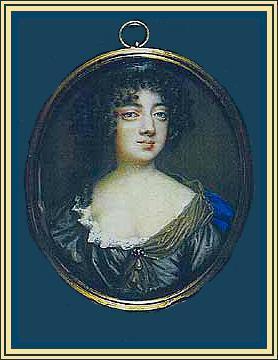
‘Beautiful, bold but insipid’
said diarist John Evelyn
Lucy was born in Roch Castle near Haverfordwest in Wales, the daughter of middle-class gentry. Her family supported Charles 1 and, as a consequence, Roch Castle was burned by Parliamentary forces in 1644. Lucy lived in London for a time before travelling to The Hague where, in the summer of 1648, she caught the eye of the young Prince of Wales. She may have been Charles’s first real mistress but he was certainly not her first lover. An earlier affair had taken place with Colonel Robert Sidney – whose brother, Algernon, had paid fifty gold pieces for Lucy’s favours but been forced to rejoin his regiment before he could claim them. This seems to say everything we need to know about Lucy’s morals.
In April 1649, Lucy bore a son, James. Charles acknowledged paternity and later created the boy, Duke of Monmouth. Then, in June of the following year, Charles sailed to Scotland where he was crowned in January 1651 and led the ill-fated Worcester campaign in an attempt to regain his throne. While he was away, Lucy had an affair with Viscount Taafe and produced a daughter, Mary.
On his return to Paris from Worcester in the autumn of 1651, Charles officially ended his liaison with Lucy with a gift of pearls – though it’s hard to say how he afforded them. Lucy then set about trying to get his attention by involving herself in a series of embarrassing scandals that rocked and dismayed the English court-in-exile. Charles wanted to remove young James from her influence – even attempting to kidnap the child – but to no avail. In 1656, Lucy took both children to London where she was arrested as a spy and incarcerated in the Tower of London for a couple of weeks before being released and deported to the Low Countries.
She died in in Paris in 1658 – probably of venereal disease.
Lucy’s importance to history is solely through her son, James. When, in the mid to late 1670’s, it became clear that Charles ll would never have a legitimate son and that his successor would therefore be his Catholic younger brother, the Country Party in England devised something they called the Exclusion Bill. Its purpose was to exclude the Duke of York from the succession and replace him with Lucy’s son, the Protestant Duke of Monmouth. This meant it would be extremely convenient if Monmouth could be proved (or at least seen to be) legitimate. And since Charles stubbornly refused to budge on the issue, many people chose to believe that he and Lucy Walter had been secretly married … and that their marriage-lines reposed in a mysterious Black Box belonging to the bishop who’d heard Lucy’s final confession.
It is certainly true that, when Charles first terminated their affair, Lucy went around calling herself his wife. But is it really likely that, either during the last months of his father’s life or in the first months of his own kingship, Charles would have done anything so rash and stupid? I think not.
You can meet Lucy in The King’s Falcon, due for release soon.


August 16, 2014
Amazon Countdown deals
As some readers may have noticed, I’ve removed three of my titles from Smashwords.com in order to enrol them in Amazon’s KDP Select.
I’ve therefore set up countdown deals at Amazon for all three books. Titles and dates of when the deals start – and are therefore at their cheapest – are as follows:-
The Marigold Chain August 29th
The Parfit Knight September 19th
The Mesalliance October 3rd
The Civil War series will remain available from both Smashwords and Amazon – and The King’s Falcon will join them in due course. Hopefully, before the end of October.


August 2, 2014
THE PRICE ONE FAMILY PAID
THE STUART BROTHERS
This is a bit different to my usual Who’s Who in that it’s not nearly as detailed. George, John and Bernard Stuart are largely known to us through Van Dyck’s outstanding portraits and details of their actual lives are very thin on the ground. Despite this – and for reasons that will become clear as you read the few lines below – I felt there was a strong case for featuring them.
Esme Stuart, 3rd Duke of Lennox and his wife Katherine had eleven children, six of whom were sons. Henry died at the age of sixteen, Francis at less than a year. Of the remaining four, only one – Ludovic – survived the Civil War.
Lord George Stuart, 9th Seigneur d’Aubigny 1618-1642

Painted by Van Dyck in 1638
George was brought up in France by his grandmother and, on the death of his father, he became a ward of Charles 1. When his brother, Henry, died in 1632, he inherited the title of Lord d’Aubigny.
Returning to England in 1636, he married Katherine, daughter of the Earl of Suffolk, secretly and without her father’s permission – which suggests that the two of them were very much in love. They had two children, a son and a daughter.
George died of injuries received at the Battle of Edgehill in October 1642. He was twenty-four years old.
On a separate note, his widow later re-married and became Lady Newburgh. She and her husband were suspected of Royalist plotting in 1648 and forced to flee abroad. You can meet Katherine [Kate] at the trial of Charles 1 in Garland of Straw.
Lord John Stuart 1621-1644 and Lord Bernard Stuart 1623-1645

Painted by Van Dyck in 1638
Like his brothers, John [the one wearing gold] entered the King’s service at the start of the Civil War. He died at the Battle of Cheriton in March, 1644, aged twenty-three.
Bernard was created Earl of Lichfield as a reward for his gallantry at the first and second Battles of Newbury. He died of wounds sustained whilst leading a sortie against Parliamentary besiegers at the Battle of Rowton Heath. He was twenty-two.
All wars are fought by young men and the Civil War was no different. At present, many people around the world are remembering the sons and brothers, husbands and fathers who lost their lives in the First World War. The tragic losses suffered by the Stuart family in the 1640’s is a perfect illustration of how little things change.
As with several other portraits in my Who’s Who collection, the ones shown here are on display at the National Portrait Gallery, London.


July 16, 2014
THE LADY OF LATHOM
CHARLOTTE DE LA TREMOILLE
COUNTESS OF DERBY
1599-1664
Of all the ladies who defended hearth and home in the absence of their menfolk, Lady Derby is probably one of the most well-known.
Born at Poitou in France, Charlotte was the daughter of the Duc de Thouars and Princess Charlotte Brabantine of Orange-Nassau. She was a grand-daughter of William the Silent and like her cousin, Prince Rupert of the Rhine, she came from the world of Calvinist royalty and the high nobility of Europe.
In 1626, Charlotte married James Stanley, Lord Strange, in a splendid ceremony in The Hague. But when the couple returned to the English court, they found little favour with either Charles 1 or Henrietta Maria and retired to their principal family seat at Lathom House, a few miles north-west of Manchester, where they lived quietly for the next fifteen years.
Everything changed in 1642. Civil War broke out and James’ father died, making him the 7th Earl of Derby. High-handed, confrontational and reputedly quarrelsome, the new Earl was no favourite with the Lancashire Roundheads; and Charlotte, regardless of her Huguenot connections, had no love for the Puritans – looking on them as rebels, not only against the King, but also against her own family. With the stage thus set, Lord Derby rode off to fight for Charles 1 … and Charlotte was left to hold Lathom House.
Lathom was a fortified palace, dating from the time of Henry V11. Surrounded by turreted battlements and a moat, it was difficult to storm and virtually impossible to bombard. The first summons to surrender came in 1643 and Charlotte replied with a indignant refusal. For the next few months, although a virtual prisoner inside her own walls, she was left in relative peace and was able to lay in supplies in the event of a siege and also to increase the size of her small garrison to a total of roughly 300 men.
Her precautions were to prove wise. In February 1644, the local Roundheads decided it was time to crush the nest of Cavaliers within their midst. Thanks to the presence nearby of Sir Thomas Fairfax, this began civilly enough. Charlotte was asked to leave, refused to do so, invited Sir Thomas to call on her and sent him away feeling reluctant to assault a lady of high birth in her own house. So far, so good. Fairfax left Colonel Alexander Rigby with instructions not to attempt to storm the house but simply to lay siege in the hope that Charlotte would eventually surrender.
She didn’t. Rigby, a fanatical Puritan and bitter enemy of Lord Derby, followed Fairfax’s orders to begin with because he’d been told that Lathom’s supplies wouldn’t last more than two weeks. Needless to say, the realisation that he’d been mis-informed made him rather annoyed.
The first shot in what was to be an eleven week siege was fired on March 12th, 1644. Charlotte and her garrison were ready and, on the following day, made a sally during which 30 of the enemy were killed at no loss to themselves. Other sallies slowed down construction of the Roundhead earthworks – so much so that it was three weeks before they were able to start using their cannon and even then their shots went too high to do much damage.
At this point, Colonel Rigby sent to London for a huge mortar. This fired grenadoes [a sort of bomb] and eighty-pound boulders on to the house and, for the first time, lives inside Lathom House were at risk. One grenado exploded close to the room in which Charlotte was dining with her officers; another demolished buildings in the courtyard; and a boulder smashed through the window of Charlotte’s bedroom.
At the end of April, Rigby resolved to use fireballs but presaged this by yet another summons. Charlotte replied that she’d set fire to the house herself and perish within it before handing it over to an insolent rebel. Then, as soon as the Colonel’s messenger had left, she planned a particularly daring exploit. At dawn the following day, her soldiers sallied out, drove the enemy from their works and captured Colonel Rigby’s mortar. In triumph, they hauled the hated weapon back to Lathom and rejoiced to see it lying amongst them like a dead lion.
Doubtless gnashing his teeth, Rigby now had little choice but to starve the garrison out. However, on May 27th came news that Prince Rupert was approaching and the Colonel wisely decided not to stay and meet him. The Roundhead army fled and the siege was over. Only six members of the garrison had died and Rupert gave Charlotte all of Rigby’s colours as a tribute to her gallantry.
After the defeat at Marston Moor spelled ruin for the Royalist cause in Lancashire, Lathom was again besieged – but this time it was captured and then razed to the ground.
During the 1650′s, Charlotte and her daughters lived in severely reduced circumstances on the Isle of Man. Lord Derby joined Charles 11 on the Worcester campaign of 1651 but was caught and executed in October of that year.
When Charles was restored in 1660, Charlotte campaigned vigorously but with little success to have all the the family lands returned to her son, the 8th Earl. She died four years later and is buried in the Derby aisle of the church in Ormskirk.


May 25, 2014
‘WILLIAM THE CONQUEROR’
Sir William Waller
1598 – 1668
Everyone’s heard of Oliver Cromwell and yet, by March 1645, when Cromwell was still a subordinate officer, Sir William Waller had been leading a Parliamentary army for two years. So who was this man most people have never heard of?
He was born at Knole House in Kent but, when he was five years old, his father became Lieutenant of Dover Castle and the Cinque Ports so William spent his childhood there. He was educated at Magladen Hall, Oxford before travelling to Italy – where, with a number of other young Englishmen, he enlisted in the Venetian army and had his first taste of military action.
By November 1620, he was defending the Protestant cause of Elizabeth, Queen of Bohemia and her husband, Frederick, the Elector Palatine. After the Palatinate forces were crushed at the Battle of the White Hill and Prague was over-run by the Austrian army, Frederick and Elizabeth – along with their one-year-old son, Rupert – were forced to flee through the snow, escorted by a few English officers. One of these was William Waller and another was Ralph Hopton – who I mention now for reasons which will become apparent later.
Returning to England, Waller was knighted by James l for services to both the Protestant religion and also, one would assume, to James’s daughter, Elizabeth of Bohemia. He then married Jane Reynell [which whom he was deeply in love] and abandoned military life in favour of managing his father-in-law’s Devonshire estates. For the next thirteen years, he lived peacefully at Forde House near Newton Abbot.
When the Long Parliament convened in 1640, Waller sat as the member for Andover and was soon prominent amongst those in opposition to Charles l. Naturally, when the Civil War broke out, his previous military experience earned him command of all the Parliamentarian forces on the south coast; and during the first year of the war, he was the most successful of the Roundhead generals – taking Portsmouth, Farnham, Winchester, Arundel and Chichester. Indeed, he was so successful that the news-sheets nicknamed him ‘William the Conqueror’.
Waller’s Horse, a Sealed Knot re-enactment
I’m not going to detail Waller’s entire Civil War career. Suffice it to say that his luck didn’t last. He was possibly not the most effective disciplinarian and was frequently plagued by mutinies among his troops. In 1643, he was soundly defeated by Sir Ralph Hopton at Roundway Down [the battle the Cavaliers liked to call Runaway Hill] and, in ’44, was mauled by the King at Cropredy Bridge. [Both feature in The Black Madonna]. His military career ended in 1645 with the Self-Denying Ordinance – the decree which said members of Parliament had to resign either their seat in the House or their military commission. Interestingly, Cromwell managed to keep both.
In the years that followed, Waller was a notable Presbyterian leader of the House of Commons and a bitter enemy of the Army commanders. He was driven into brief exile in 1647, was one of the Members purged from the Commons in 1648 by Colonel Pride [see Garland of Straw] and subsequently suffered at least two spells of imprisonment. Finally, in the later 1650s, he was driven to contact the exiled Royalists – though this earned him no reward at the Restoration.
On a personal level, Waller had all the sterling qualities of a medieval knight. He was brave, honourable and deeply religious. He was one of many moderate, humane men on both sides of a terrible civil conflict. And the main reason I’ve chosen to add him to my Who’s Who list, and possibly also one of the best reasons to remember him is contained in a letter he wrote to Sir Ralph Hopton – his friend for more than twenty years but now also his enemy – on the eve of the battle of Lansdown in 1643.
‘The great God, which is the searcher of my heart, knows with what a sad sense I go upon this service and with what a perfect hatred I detest this war without an enemy.’


April 10, 2014
THE CHEAPSIDE HOARD … AND LUCIANO DEL SANTI
Some of you who follow me on this site have asked whether I’ve seen the Cheapside Hoard at the London Museum. In fact, I visited it some years ago and returned yesterday to see the extended exhibition – which is both amazing and fascinating.
The collection defies description, so I won’t try. I’ll merely say that I fell in love with some of the daintiest pendants I’ve ever seen; that the emerald salamander [photo below] is barely more than an inch long but beautifully-detailed; and that my personal favourite was the emerald parrot [see above] which is no larger than the nail on my little finger – but perfectly recognisable.
Thanks to a surge in publicity lately, I imagine most people at least know of the Hoard’s existence – but due to what I’ll call the ‘Luciano connection’, I thought it might be interesting to fill in some background information.
Basically, the Hoard is an unbelievably large collection of Elizabethan and Jacobean jewelry, coins and uncut gems. It was discovered in June, 1912 by workmen demolishing numbers 30-32 Cheapside, on the corner with Friday Street. The men found it buried in the earth floor of a cellar, caked in mud and virtually unrecognisable as what it actually was. Finds of various nature were not uncommon in London at that time and a gentleman known as Stony Jack Lawrence had for years been trying to teach workmen that even the merest fragment of metal or pottery could have archaeological significance.
Stony Jack was a number of things; collector, antiquarian and pawnbroker as well as library assistant for the Guildhall Museum. When he received the first installment of the Hoard – there were several of them – he realised that there was only one possible home for it. Within two days, he had been appointed Inspector of Excavations for the London Museum – but the incredible discovery was kept severely under wraps for a further two years. Not until March, 1914 did the Hoard go on display to the public in the Gold and Silver Room of the museum’s new home in Stafford House.
One naturally marvels at the sheer wealth of the collection and the many exquisitely-crafted pieces … but the inescapable questions arise. Who buried it in that cellar – and when – and why?
Well, there are plenty of possible theories and only one fairly conclusive fact.
The part of Cheapside where the Hoard was found was known as Goldsmiths’ Row and most, if not all, of the properties were owned and leased out by the Company of Goldsmiths. This, and the large number of uncut stones from places as far apart as Russia, South America and India along with certain unfinished pieces, suggest that the Hoard was stock of a working goldsmith.
As for the rest, if we can answer the ‘Why?’, we’ll probably also know the ‘When?’
As we are all aware, there were frequent outbreaks of Plague – most notably in 1625,1636 and 1665. But generally speaking, men of substance were able to flee the City for the duration and would almost certainly have taken their valuables with them.
The Great Fire of London might be a possibility – except that it took two days for the blaze to reach the west end of Cheapside. Shopkeepers there had plenty of time to remove their valuables and it’s hard to believe a goldsmith would choose to bury items of such value beneath premises that might well be burned down.
This leaves us with the Civil War. Did our goldsmith quit his trade to fight for one side or the other? Unlikely, I’d have thought – though if he went to war and never came back, it would account for him not retrieving his treasure. Or did he bury the Hoard because he was going away and was unable to either take it with him or entrust it to someone else?
This last, if you’ve read The Black Madonna, is obviously my favourite.
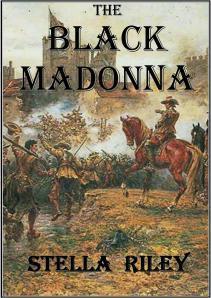
The Black Madonna
And finally to the ‘Luciano connection’. When I originally wrote The Black Madonna [back in 1991]I didn’t know of the Hoard’s existence until the book was more than half-written. Consequently, by the time I did learn of it, I had already set Luciano del Santi’s goldsmith’s shop on the corner of Friday Street and Cheapside – and thus, purely by accident, created a coincidence that was just too delicious to resist.
And since, to this day, nobody knows the real answers to the mystery of the Hoard and there is nothing amongst what we do know to contradict my fictional theory, I think it is probably as good a suggestion as any other.
The extended exhibition runs until April 27th and is well worth a visit. Magnifying glasses are supplied!





